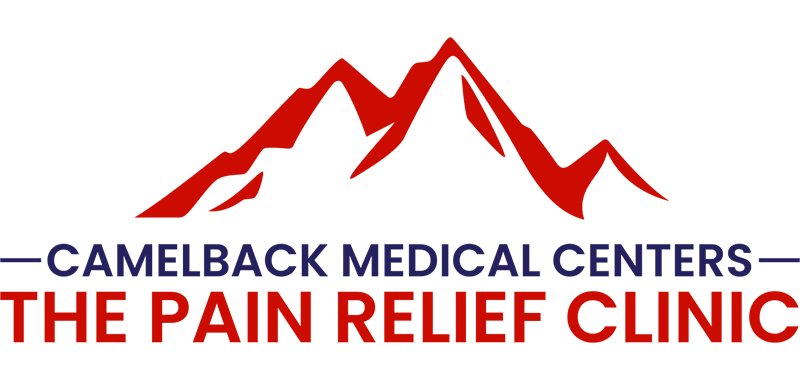6 Things to Know About Using Muscle Relaxers
Introduction
Muscle relaxers are medications designed to reduce muscle spasms and alleviate acute muscle pain. They work by depressing the central nervous system, helping to ease muscle tightness and discomfort. Understanding their use in pain management is crucial, particularly for those dealing with back pain, neck pain, or muscle injuries. Misuse or uninformed use of these medications can lead to unwanted side effects or complications.
In this article, you’ll learn six essential things about using muscle relaxers, including their effectiveness for lower back pain, considerations for pregnant women, age-related suitability, potential side effects, addiction risks, and the different types available on the market.
1. Muscle Relaxers for Lower Back Pain
Muscle relaxers are often prescribed to alleviate acute muscle pain and spasms, especially in cases of lower back pain. These medications target the central nervous system to reduce muscle tension. When you experience a muscle spasm, your muscles contract involuntarily, causing intense pain. Muscle relaxers help interrupt these spasms, providing relief.
Common Causes of Lower Back Pain:
- Muscle Strains: Due to overexertion or improper lifting techniques.
- Herniated Discs: Discs that slip out of place.
- Traumatic Injuries: From accidents or falls.
- Degenerative Conditions: Like spinal stenosis or arthritis.
To ensure safe use, it’s important to follow your doctor’s prescribed regimen. Mixing muscle relaxers with other medications or substances without consulting your healthcare provider can lead to harmful interactions. Always adhere to the dosage and duration advised to avoid side effects and ensure effective treatment.
For additional advice on managing lower back pain, explore our back pain treatments at Camelmed.
2. Considerations for Pregnant Women
Muscle relaxers should be used cautiously during pregnancy and breastfeeding. Taking these medications can pose risks to the developing baby, and they might pass into breast milk, potentially affecting the infant. Unfortunately, there is limited research on the safety of muscle relaxers for pregnant and breastfeeding women, making it difficult to assess their risks versus benefits.
Alternative Treatments for Pregnant Women:
- Chiropractic Care: Provides drug-free pain relief.
- Physical Therapy: Tailored exercises to manage muscle pain.
- Prenatal Yoga: Helps ease muscle tension and promotes well-being.
Always check with your healthcare provider before starting any new treatments. For more information, read about prenatal care options.
3. Age and Suitability of Muscle Relaxers
Age plays a crucial role in determining the suitability and effectiveness of muscle relaxers. Elderly individuals are more susceptible to side effects, which can affect their quality of life.
Risks for Older Adults:
Muscle relaxers can cause drowsiness and impaired coordination, increasing the risk of falls and related injuries. Due to slower metabolism, older adults may also experience prolonged sedation.
Recommendations by Age Group:
- Younger Adults: Generally tolerate muscle relaxers better due to faster metabolism.
- Elderly Patients: Alternative pain management strategies, or lower doses with careful monitoring, are often suggested to reduce risks.
Understanding age-related factors helps in making informed decisions about treatment. Consult your healthcare provider to find the best options based on your age and health conditions. Learn more about elderly care and pain management.
4. Side Effects of Muscle Relaxers You Should Be Aware Of
Muscle relaxers come with a range of side effects. While some are common, others can be more severe.
Common Side Effects:
- Drowsiness
- Fatigue
- Headaches
- Nausea and dry mouth
- Confusion or irritability
More Severe Side Effects:
- Constipation and loss of appetite
- Withdrawal symptoms like nausea and vomiting when the medication is stopped abruptly
If you notice any concerning symptoms, contact your doctor immediately to discuss adjusting your dosage or switching medications.
5. Understanding the Risk of Addiction to Muscle Relaxants
Addiction is a potential concern with prolonged use of certain muscle relaxants, such as Carisoprodol and Diazepam. These medications act on the central nervous system and can be habit-forming.
Signs of Dependency:
- Increased tolerance – needing higher doses for the same effect.
- Withdrawal symptoms – nausea, vomiting, or sleep disruption when not taking the medication.
- Behavioral changes – prioritizing medication use over daily responsibilities.
- Cravings – strong urges to use the medication.
Strategies for Safe Use:
- Follow prescription guidelines strictly.
- Avoid alcohol and other depressants to reduce the risk of dependency.
- Regularly consult your doctor to monitor how the medication affects you.
6. Different Types of Muscle Relaxants Available in the Market
Understanding the different types of muscle relaxants available helps in selecting the right one for your condition. Here are some commonly prescribed options:
- Diazepam – A sedative used for muscle pain and spasms. Available as oral tablets, injections, and rectal gels.
- Carisoprodol – Effective for short-term use (up to three weeks), but has a high potential for addiction.
- Metaxalone – Offers relief for muscle pain with fewer side effects, but requires caution in elderly patients.
- Methocarbamol – Blocks pain signals to the brain with minimal sedation, but still poses a risk of dependency.
Your healthcare provider can help determine which muscle relaxant is most suitable for you based on your specific health needs.
For a full list of pain relief options, including non-drug alternatives, visit Camelmed’s pain management section.
When to Seek Medical Help and Alternative Treatments
If you experience persistent or worsening symptoms while using muscle relaxers, it’s essential to seek medical help. Your doctor can evaluate whether these medications are right for you or suggest alternative treatments.
Alternative Treatments to Consider:
- Physical Therapy
- Chiropractic Care
- Massage Therapy
- Acupuncture
- NSAIDs like ibuprofen
Frequently Asked Questions
What are muscle relaxers and how do they help with pain management?
Muscle relaxers are medications that help alleviate acute muscle pain and spasms by acting on the central nervous system to reduce muscle tension and discomfort.
Are muscle relaxers safe for pregnant or breastfeeding women?
Muscle relaxers may pose risks during pregnancy and breastfeeding. It’s recommended to consider alternative treatments like chiropractic care and consult your healthcare provider.
How does age affect the use of muscle relaxers?
Age significantly impacts the suitability of muscle relaxers. Older adults are at higher risk for side effects like drowsiness and falls.
What are common side effects of muscle relaxers?
Common side effects include drowsiness, fatigue, headaches, and nausea. More severe symptoms like withdrawal may occur with prolonged use.
Can using muscle relaxants lead to addiction?
Yes, certain muscle relaxers can lead to addiction, especially with prolonged use. Signs include increased tolerance and cravings.
What types of muscle relaxers are available in the market?
Options include Diazepam, Carisoprodol, Metaxalone, and Methocarbamol, each with different properties. Consult your healthcare provider to determine which is best for you.




